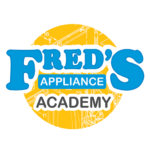Pressure Test Sealed System with Nitrogen
**NOTICE**
Due the danger and complexity of electronic equipment repair, the following technical tip is intended for professional reference only. Please refer to manufacturer’s recommendations as Encompass does not guarantee the accuracy, reliability or safety of this information.
**NOTE: Working on refrigerator sealed systems is considered an advanced repair that should only be performed qualified, professional technicians.**
To check for leaks in sealed refrigeration systems, nitrogen can be used instead of air or water because it’s inert, odorless and has low moisture content. Following are some basic steps for conducting a pressure test:
- Attach the service hose to the process stub on the compressor.
- Then, attach the service hose to the regulator on the nitrogen tank.
- Turn the nitrogen tank on check the PSI. A brand new tank should have about 2,000.
- Deliver nitrogen to the refrigerator by turning the T-handle to the right until reaching about 100 PSI. Turning the handle to the left will decrease pressure or turn it off.
- With nitrogen now pressurizing the system, check all joints for leaks. Large leaks should be heard on the suction line, but for smaller leaks, bubble testing is required.
- As nitrogen leaves the system and pressure further decreases, bubbles become smaller and smaller. The smaller the leak, the smaller the bubbles.
Please keep in mind when bubble testing, the system should always be pressurized. This helps prevent the solution from being drawn into the sealed system, as well as to show the bubbles.
Special thanks to Fred’s Appliance Academy for this helpful tip!





Leave a Reply